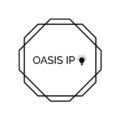Simply put, trademarks are distinctive tools of identification used by producers and providers of goods & services to inform their customers of their products or services.
Trademarks are used by producers and service providers to inform their customers of their goods or services and most importantly guarantee their quality and value. Different individuals and companies often trade or deal in the same or similar products, or offer the same services. How then will their customers distinguish such services or products or attribute them to their trusted suppliers? This is how Trademarks come into play as a tool of communication between producers and customers.
Any sign or combination of signs capable of distinguishing the goods or services of one undertaking from those of other undertakings should be capable of constituting a trademark (Article 15 (1) TRIPS Agreement).
A trademark (for producers of goods or products) or service mark (for providers of services) is not limited to signs or combination of signs and words.
The most common trademarks are word marks consisting of words, names, letters abbreviations among others and figurative marks consisting of figures either two or three dimensional.
Sound marks can also serve as trademarks. Take an example of the Nokia tone or the Samsung tone.
There are also smell & texture marks consisting of particular scents in the products and textures inscribed on the products.
Hologram marks although new and uncommon are used on products like credit cards, club membership cards showing images or numbers inscribed into the cards which can only be seen at certain angles.
As earlier mentioned, only knowledge or information that meets the threshold requirements will be subject to intellectual property protection.
The threshold for trademark protection or simply characteristics that trademarks should have are as follows;
- The mark should be distinctive
Trademarks are used a tool for identification of particular goods from others, therefore, the mark used by one provider or producer should be distinctive from that of another producer or provider. This is the only way that a mark can fulfil its purpose of distinguishing products and communicating to consumers.
A trademark is distinctive if by its nature, it is capable of distinguishing goods and services. This also means that it should not be descriptive. It is descriptive, if it describes the goods it seeks to protect. A trademark that describes the goods it seeks to protect is not distinctive because it does not distinguish goods from those of competitors since they too are dealing in the same products.
For example, the `Apple` trademark for computers is distinctive for computer and other related products but it cannot be distinctive if the goods produced by Apple were actual apples.
This does not mean that a producer dealing in actual apples cannot use a figurative element of an apple for their products. They can use the figurative element or image of an apple if it is combined with other signs, elements or words that make it distinctive not descriptive.
2. The mark should not be deceptive
A mark is deceptive if it portrays goods to be of a certain quality which the goods do not have. A mark can also be deceptive if it can easily mislead the consumers about the product origin or raw materials in the goods.
A deceptive mark can be determined by considering the relevance of the mark to the nature of the goods it is sought to protect and how such a mark will be perceived by the ordinary consumers. If the mark will be misleading in anyway especially towards the quality, origin, raw materials attributed to the product by the mark, then it could be found to be deceptive.
It should be noted that there are also signs that CANNOT be used as Trademarks and will not be registered by any trademark registration office.
Such marks include signs misleading the consumer as to the geographical origin of the products, quality or nature of the products, signs contrary to moral or public order, signs containing flags or emblems of states or International Organizations like the UN among others.
A trademark achieves its purpose of distinguishing goods and protecting its owner/user`s rights after it has been registered as such.
It is upon registration that the owner of a trademark can affix the mark on its goods, label its packaging thereby exercising the right of exclusivity guaranteed by registration of a trademark and prohibiting other producers from using the mark on similar products without a license.
The owner of a trademark generates income and creates economic value from protecting and distinguishing their products, and they can also license other producers to use their mark on their products in return for payment.

